Above, clockwise from top left: the Current Table, Sawdust’s 3D looking type for Wired magazine, Markthal Rotterdam and Shadowing.
The Design Museum has announced its nominations for Designs of the Year 2015. As always, it’s a diverse list, with projects ranging from a hand painted visual identity to microchips that mimic living organs…
Seventy-six nominations were selected by the museum from recommendations submitted by design experts, practitioners and academics. Nominations are divided into six categories – architecture, digital, fashion, graphics, product and transport – and will be showcased at an exhibition opening on March 25. An overall winner will then be selected from a panel of judges, this year made up of artist Anish Kapoor, fashion designer Nicole Fahri, architect Farshid Moussavi and PearsonLloyd co-founder Tom Lloyd.
The Design Museum describes its selection as a celebration of “design that promotes or delivers change, enables access, extends design practice or captures the spirit of the year”. As always, featured projects include those chosen for their beauty or originality, as well as ones which have the potential to deliver significant social or environmental change. It’s an international line-up too, with projects from Asia, Europe, the US, South America and Africa, and from independent designers and research teams as well as global practices.
This is both one of the show’s biggest strengths and its biggest challenge – each year presents an inspiring showcase of inventive and beautiful designs, but how do you judge between a toilet which has the potential to save millions of lives and a beautifully crafted custom typeface? It has also led to confusion over what the scheme is actually for: while the top prize in previous years tended to be reserved for good causes, last year’s winner – Zaha Hadid’s Heydar Aliyev Center in Baku – was a shift away from this.
With 2015’s nominees ranging from private homes to air purifying billboards, iPad games and 3D printed limbs, it’s anyone’s guess what will be named the winning design in May. You can see the full list of nominations at designmuseum.org, but here’s a selection from each category:
Digital
Digital nominations this year include games, installations, interactive street furniture and online data visualisations: The Refugee Project by Hyperakt and Ekene Ijeoma uses UNHCR refugee data and UN population data to visualise refugee movement around the world from 1975 to 2012, highlighting the plight of refugees and giving context to major crises:
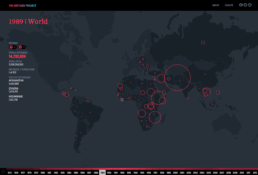
ustwo’s Monument Valley is one of two games nominated – the other is Sean Murray’s No Man’s Sky, a science-fiction game where players have to survive in an infinite fictional galaxy, made using a system that generates new terrain during gameplay rather than loading predesigned levels.
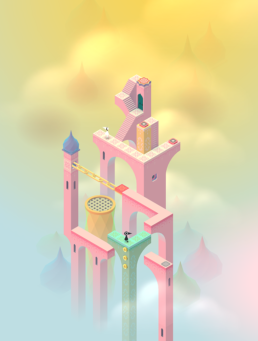
Installations include Asif Khan’s Megafaces, which projected giant 3D self-portraits of visitors on to a large-scale LED display at the Sochi Winter Olympics and Shadowing, the winner of the 2014 Playable City Award, which uses streetlights to capture the shadow of passers-by and project it alongside the next person walking past:
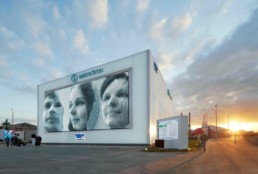
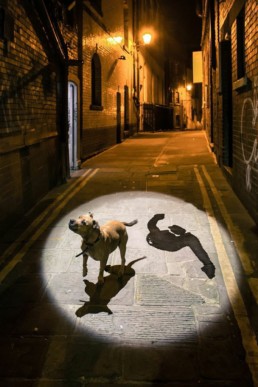
Shadowing, by Jonathan Chomko and Matthew Rosier
Others are designed to help protect the environment or the way in which people interact with their surroundings: Responsive Street Furniture (pictured below) allows people with physical impairments and learning difficulties to register specific needs via a website – such as brighter street lighting or audio information at street signs – which can then be activated when they approach a responsive item, while the Ocean Clean Up, which raised over $2 million through crowdfunding, can be used to capture and extract plastic from the ocean.
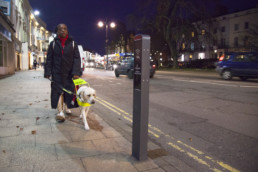
Graphics
Graphics nominees span editorial, exhibition, type and identity design – from Kellenberger-White’s hand-painted identity for arts festival Glasgow International.
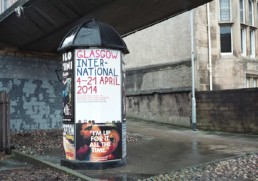
To Norway’s new banknotes, designed by Snøhetta and The Metric System, which feature a striking pixellated design on the reverse, inspired by the country’s coastline:
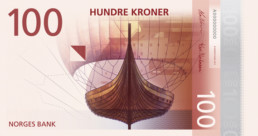
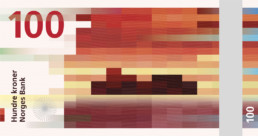
There’s also Inglorious Fruits & Vegetables, a campaign which for French supermarket Intermarché to encourage people to eat misshapen or ugly fruit and veg and reduce food waste.
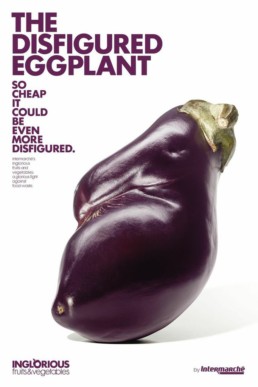
While books include 100 Years of Swiss Graphic Design, showcasing Swiss graphics and typography and Irma Boom’s all-white embossed book for Chanel No 5. Danielle Pender’s Riposte magazine (designed by Shaz Madani) has also been shortlisted, as has Sawdust’s bespoke type for Wired magazine, Pentagram’s identity for MIT Media Lab and Designing for the Sixth Extinction, an exhibition designed by Alexandra Daisy Ginberg for Dublin’s science museum, exploring synthetic biology.
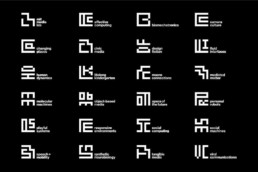
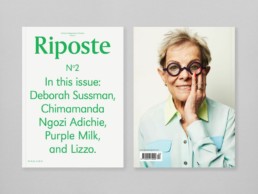
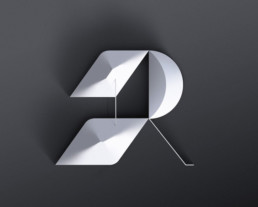
Product
Twenty-three products are featured in this year’s nominations: several aim to tackle environmental or health issues – from a billboard that turns air into water and removes particles of wood, stone, dust and metal from contaminated air around construction zones developed by Peru’s University of Engineering and Technology, to Project Daniel, a 3D printing lab set up by Mick Ebeling to create prosthetic limbs, and Blue Diversion, a closed toilet system which can operate independently of water, sewers or an electricity connection, providing people in remote areas with much-needed access to safe sanitation.
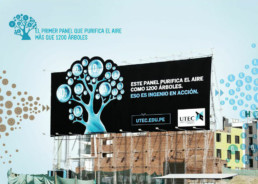
Technology products include the Brck, a mobile WiFi device designed in Kenya that can withstand blackouts and deliver internet connection to people in rural areas, Technology Will Save Us’ DIY gamer kit, which allows users to build their own handheld games console and code their own games using open-source software and the Kano Computer Kit. Furniture includes a stackable, lightweight chair from Scholten & Baijings, while the most bizarre entry has to be Grow It Yourself Mushroom Materials, a pack which enables users to create objects out of mushroom fungus (materials can also be composted after use).
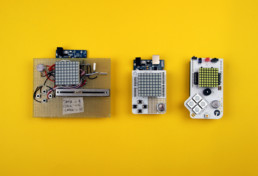
DIY Gamer Kit
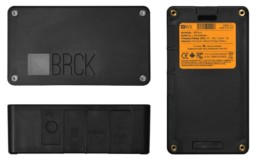
The Brck
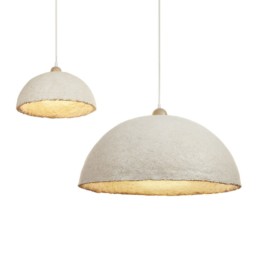
Grow It Yourself
Architecture
Architecture nominees include buildings from Asia, South America, Europe, Africa and the US, ranging from sweeping towerblocks to a Copenhagen kindergarten and a house in the Arizona desert constructed using traditional rammed earth techniques.
Several community and leisure spaces are featured, from a state of the art gym created out of an existing sports centre in a Brazilian favela to Markthal Rotterdam, the first covered food market in the Netherlands. Cultural centres include Frank Gehry’s Fondation Louis Vuitton, which houses art exhibitions and performances in a ‘glass cloud’ structure made out of thousands of curved glass panels, and the beautiful Philharmonic Hall of Szczecin, a 1000-seat symphony hall in Poland built on the site of a former Konzerthaus which was destroyed during World War Two.
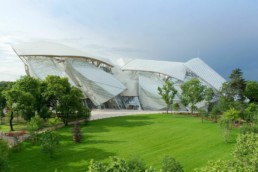
Fondation Louis Vuitton
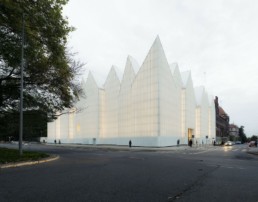
Philharmonic Hall of Szczecin
Fashion
Alongside catwalk shows by Rodarte (a collection inspired by Star Wars), J.W. Anderson and Raf Simons, fashion nominees include Central Saint Martins graduate Thomas Tait, Satu Maaranen, a Helsinki designer who graduated in 2012 and Archivist, a publication founded by fashion director Jane Howard. The title describes itself as offering a unique view on fashion, showcasing emerging talent, designers’ archives and personal collections, rather than simply promoting new designs.
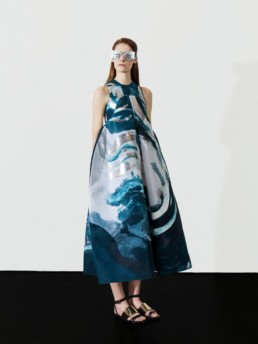
Satu Maaranen SS15
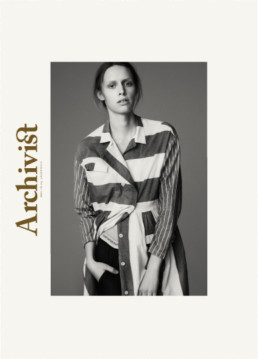
Archivist
Transport
Transport nominees include BMW’s i8 hybrid car and Google’s much anticipated driverless vehicle as well as Loopwheels (a set of wheels with integrated suspension, which make it easier to go over bumps and potholes and mount kerbs in a wheelchair or on a bike) and the Dainese D-Air Bag Street, a personal airbag vest and sensor kit for motorcyclists which can anticipate a frontal collision and inflate to protect its wearer within 45 milliseconds.
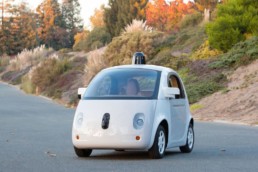
Google’s Driverless Car
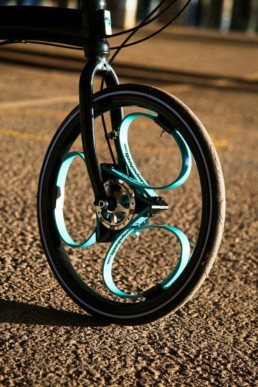
Loopwheels
Winning projects from each category will be announced on May 4 and the overall winner on June 4. For more info, see designmuseum.org
Source: Creative Review
